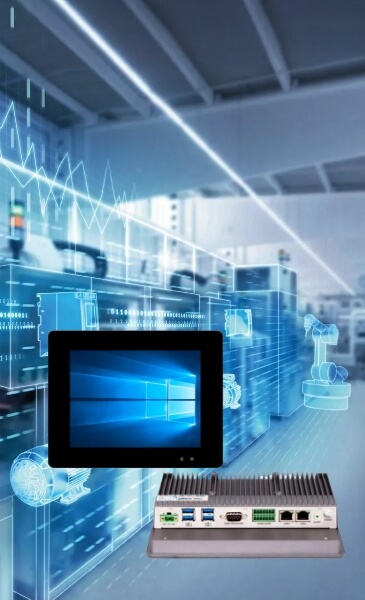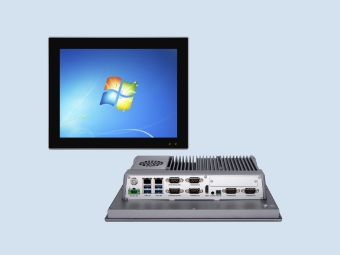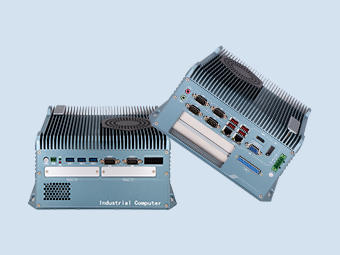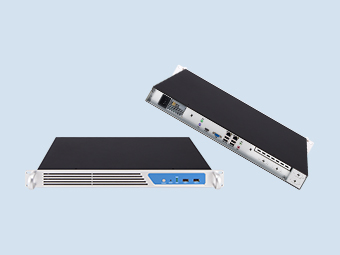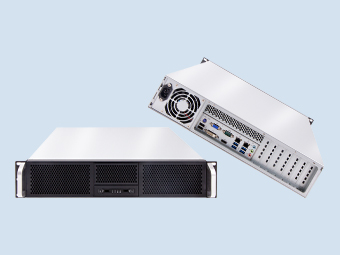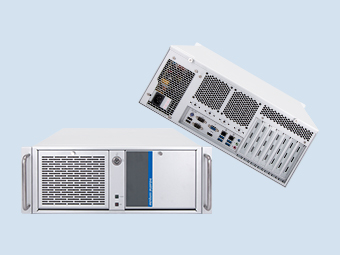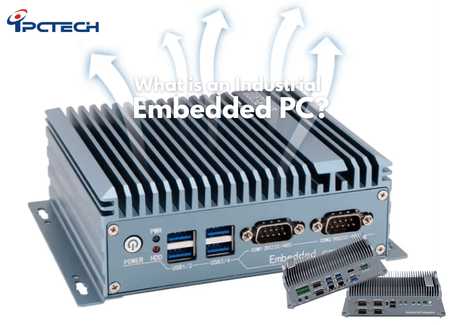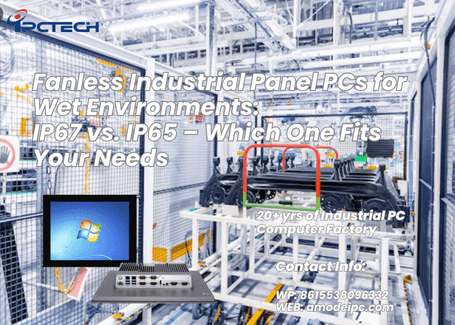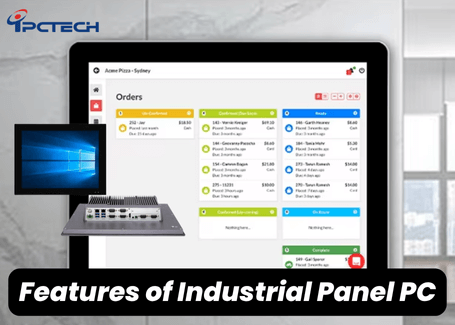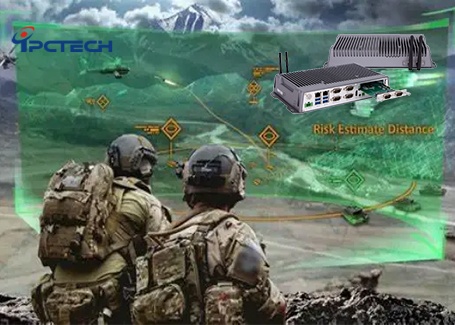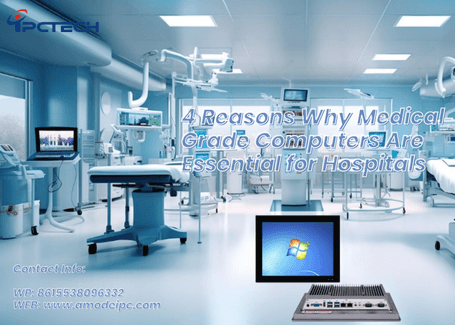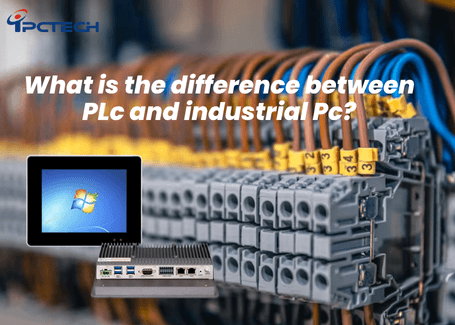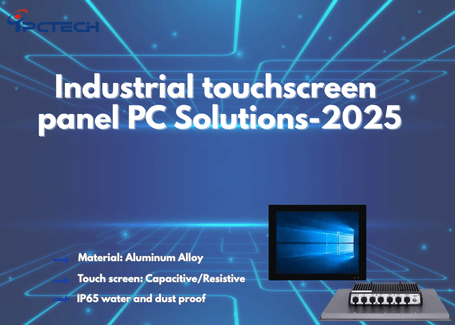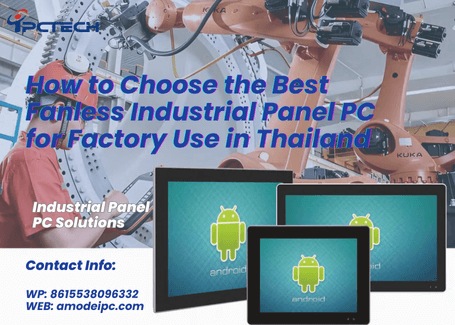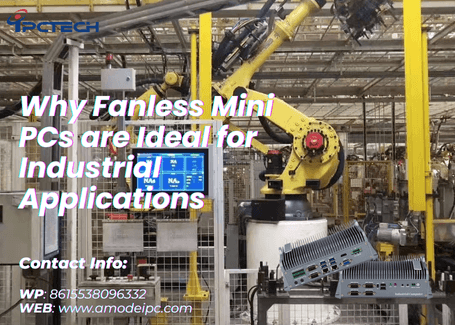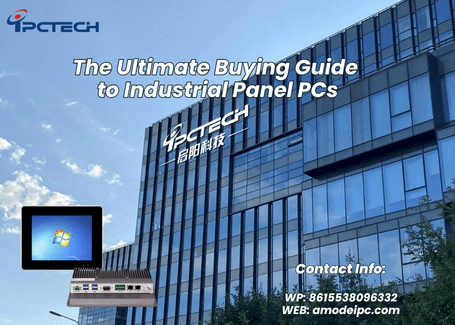What is the difference between IPC and HMI
2025-04-30
Introduction
In modern intelligent factories, we can often see the scene of industrial PC (IPC) and human machine interface (HMI) working together. Imagine, in an automotive parts production line, technicians through the HMI real-time monitoring of equipment operating status, adjust production parameters, while the IPC in the background stable operation of complex automation programs, processing large amounts of production data. So, what is the difference between IPC and HMI? This article will analyze the differences between the two, to help readers make a more appropriate choice in industrial applications.
What is an Industrial PC (IPC)?
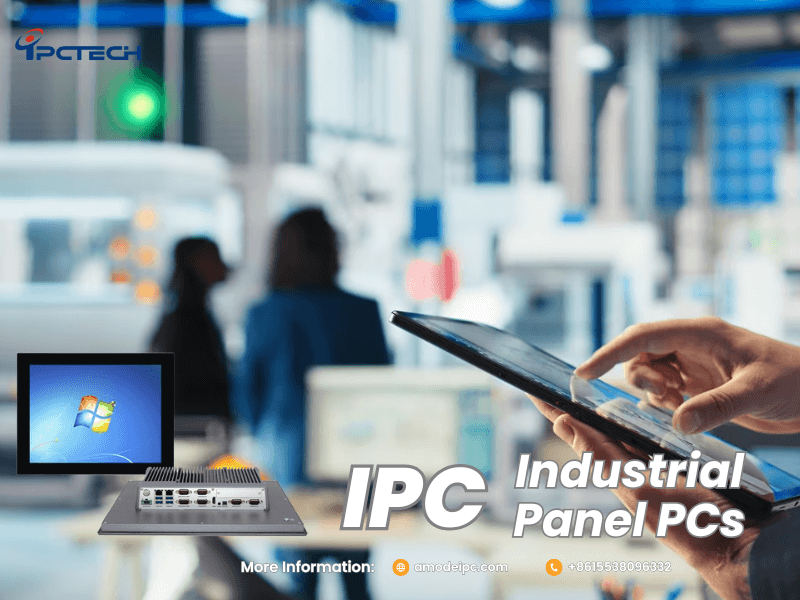
Basic concept: industrial “computer”
Industrial PC (Industrial PC, referred to as IPC) in the hardware architecture and our daily use of notebooks, desktop computers have many similarities, also equipped with a microprocessor (CPU), storage media, memory (RAM), and various types of interfaces and ports, but also with similar software features. similar software functions. However, IPCs are closer to programmable logic controllers (PLCs) in terms of programming capabilities. Because they run on a PC platform, IPC controllers have more memory and more powerful processors than PLCs and even some programmable automation controllers (PACs).
Rugged: Built for Harsh Environments
The IPC is distinguished from a regular PC by its “rugged” nature. Tailored for harsh environments such as factory floors, it can withstand extreme temperatures, high humidity, power surges, and mechanical shock and vibration. Its rugged design can also withstand large amounts of dust, moisture, debris, and even some degree of fire damage.
The development of IPC began in the 1990s when automation vendors attempted to run control software on standard PCs that simulated PLC environments, but reliability was poor due to issues such as unstable operating systems and non-industrialized hardware. Today, IPC technology has come a long way, with more stable operating systems, hardened hardware, and some manufacturers have developed customized IPC systems with real-time kernels that separate the automation environment from the operating system environment, prioritizing control tasks (such as input/output interfaces) over the operating system.
Features of an industrial PC
Fanless Design: Ordinary commercial PCs usually rely on internal fans to dissipate heat, and fans are the most failure-prone component of a computer. While the fan draws in air, it also carries in dust and other contaminants that can accumulate and cause heat dissipation problems, leading to degradation of system performance or hardware failure. IPC utilizes a proprietary heatsink design that passively conducts heat from the motherboard and other sensitive internal components to the chassis, where it is then dissipated to the surrounding air, making it especially suitable for use in dusty and hostile environments.
Industrial Grade Components: The IPC utilizes industrial grade components designed to provide maximum reliability and uptime. These components are capable of 7×24 hour uninterrupted operation, even in harsh environments where ordinary consumer-grade computers may be damaged or scrapped.
Highly Configurable: IPC is capable of a wide range of tasks such as factory automation, remote data acquisition, and monitoring. Its systems are highly customizable to meet project needs. In addition to reliable hardware, it offers OEM services such as custom branding, mirroring and BIOS customization.
Superior Design and Performance: Designed to handle harsh environments, IPCs can accommodate a wider operating temperature range and resist airborne particles. Many industrial PCs are capable of 7×24 hour operation to meet the needs of various special applications.
Rich I/O Options and Functionality: In order to effectively communicate with sensors, PLCs, and legacy devices, the IPC is equipped with a rich set of I/O options and additional functionality to meet the needs of applications outside of the traditional office environment without the need for additional adapters or dongles.
Long Lifecycle: Not only is the IPC highly reliable and long-lasting, it also has a long product lifecycle that allows organizations to use the same model of computer for up to five years without major hardware replacements, guaranteeing long-term stable support for applications.
What is an HMI?
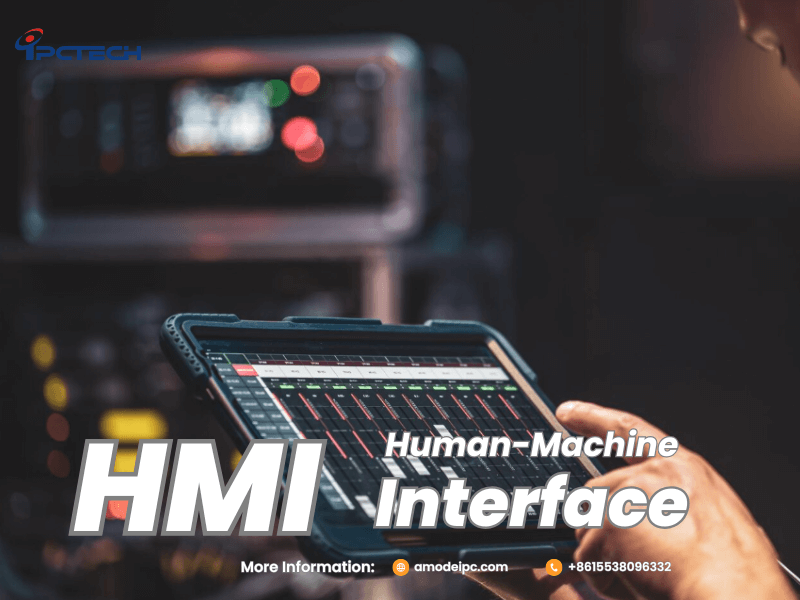
Definition and function: the “bridge” between man and machine
A Human-Machine Interface (HMI) is the interface through which an operator interacts with a controller. Through the HMI, the operator can monitor the status of the controlled machine or process, change the control objectives by modifying the control settings, and manually override automatic control operations in case of emergency.
Types of Software: Different Levels of “Command Centers”
HMI software is typically divided into two basic types: machine-level and supervisory. Machine-level software is built into the machine-level equipment within a plant facility and is responsible for managing the operation of individual devices. Supervisory HMI software is primarily used in plant control rooms, and is also commonly used in SCADA (System for Control of Data Acquisition and Supervisory Access), where shop-floor equipment data is collected and transmitted to a central computer for processing. While most applications utilize only one type of HMI software, some applications use both, which, while more costly, eliminates system redundancy and reduces long-term costs.
Tight correlation between hardware and software
HMI software is usually driven by selected hardware, such as an operator interface terminal (OIT), a PC-based device, or a built-in PC. For this reason, HMI technology is sometimes referred to as operator terminals (OTs), local operator interfaces (LOIs), operator interface terminals (OITs), or man-machine interfaces (MMIs). Choosing the right hardware often simplifies the development of HMI software.
HMI vs. IPC: What's the Difference?
Processor and Performance: The Power Difference
IPCs are equipped with high-performance processors, such as the Intel Core i series, and larger amounts of memory. Because they run on a PC platform, IPCs have more processing power and more storage and memory space. In contrast, HMIs mostly utilize lower-performance CPUs because they only need to perform specific tasks, such as a single machine-level or monitoring-level task, and don't need to reserve a lot of processing power to run other software or control tasks. In addition, HMI manufacturers need to weigh performance and cost to achieve the optimal balance of hardware design.
Displays: Size Makes a Difference
IPCs are often equipped with larger displays that can show more information at the same time, providing operators with a wider field of view. The traditional HMI display size is relatively small, usually between 4 inches and 12 inches, although some HMI manufacturers are now beginning to provide larger screens for high-end applications.
Communication Interfaces: Differences in Flexibility
IPC provides a wealth of communication interfaces, including multiple USB ports, dual Ethernet ports and/or serial ports, which makes it easier to connect to the hardware, and easier to adapt to the expansion needs of future applications. At the same time, the PC-based IPC serves as a visualization tool that can be flexibly integrated with other communication protocols and applications compatible with the operating system. On the contrary, traditional HMI is relatively less flexible due to its dependence on specific communication protocols and application software.
Technology Upgrade: Differences in Difficulty
With the development of technology, the need for hardware expansion is increasing. In this regard, IPC hardware expansion is easier and more cost-effective. For HMI, if you need to change the hardware supplier, often can not directly migrate the visualization project, you must re-develop the visualization application, which will not only increase the development time and cost, but also in the automation system after the deployment of maintenance difficulties.
Ruggedness of IPCs and HMIs
Ruggedness of IPCs
IPCs are ruggedized for stable operation in harsh environments such as extreme temperatures, dust, and vibration. Fanless design, industrial-grade components, and reliable construction enable it to withstand the challenges of industrial environments and ensure stable operation for long periods of time.
Rugged Characteristics of HMI
In the field of industrial automation, equipment equipped with HMI is often in harsh environments, so HMI must have the following rugged characteristics:
Shock Resistance: HMIs are often installed in environments with constant vibration, such as manufacturing plants or mobile equipment, and need to be able to withstand continuous vibration and occasional shocks to ensure uninterrupted operation.
Wide Temperature Range: HMIs should have an operating temperature range of - 20°C to 70°C to accommodate environments ranging from low temperatures in frozen food processing plants to high temperatures in steel mills.
Protection rating: In places where equipment needs to be cleaned frequently, such as food processing plants, HMIs need to be at least IP65 rated to protect against dust ingress and splashing water to ensure equipment safety.
Fanless design: In places such as sawmills and forges, a fanless design prevents particles such as sawdust and iron filings from entering the equipment, extending its service life.
Power Protection: HMIs should have a wide voltage range (9-48VDC), as well as over-voltage, over-current and electrostatic discharge (ESD) protection to ensure stability and reliability in a variety of industrial environments.
When to choose IPC?
When faced with a large-scale, data-intensive factory automation project that requires running complex software, managing large databases, or implementing advanced features, IPC is a better choice. For example, in an automated control system for an automotive production line, IPC can handle large amounts of equipment data, run complex scheduling algorithms, and keep the line running efficiently.
When to choose HMI?
HMI is a cost-effective choice for applications that require simple monitoring and control of a PLC. For example, in a small food processing plant, an operator can easily monitor and adjust the operating parameters of a packaging machine through an HMI to meet daily production needs.
Conclusion
Industrial PCs (IPCs) and human-machine interfaces (HMIs) play different roles in industrial automation, but both are indispensable: IPCs are suitable for complex, large-scale industrial projects due to their powerful performance and scalability, while HMIs meet the needs of simple monitoring and control with their convenient human-machine interactions and cost-effective performance. In practical applications, understanding the differences between the two, in order to make the optimal choice according to the project requirements, so that the industrial automation system to maximize performance.
Recommended
